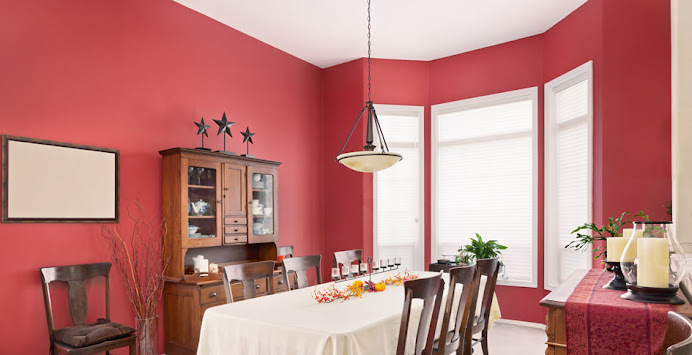7 Budget-Friendly Tips for Professional Interior Painting
If you want to paint your walls this year and save money, you might have thought about doing it yourself. It's a good idea if the job is not too hard. Big jobs, like painting the outside of a house or tricky parts inside, are better for professionals.
Once you decide to paint a
room yourself, plan to save as much money as you can. Get all the things you
need to paint, choose a good time to start, and learn some basic painting tips.
Read about how to paint corners and follow these tips to make the project cheap
and easy.
1. Share
Painting Supplies
Paint doesn't last forever,
but the tools you use to paint can be used again and again. Look for the tools
you used the last time you painted, or ask a neighbor or friend who painted
recently if you can borrow theirs. They likely won't need them soon, and you
can give them back in good condition.
2. Calculate
Wall Space
Having a bit of extra paint is
okay because it can be useful for fixing small holes or dings later. However,
having too much leftover paint can be hard to get rid of properly and tricky to
store.
Measure the walls you want to
paint and use a paint calculator to figure out exactly how much paint you need
to buy. If it's a big, open space, think about buying paint in larger
quantities to save more money.
3. Invest
in Paint Quality
Choosing the cheapest paint
might seem like a good idea, but it can be thin and need many coats to cover a
wall well. Find a paint brand in the right price range that also promises good
quality or important features, like a self-primer if you're painting over a
certain color.
Don't worry too much about a
lifetime warranty that costs more – you'll likely change the paint color before
the paint wears out.
4. Use a
Primer Only if Necessary
Many self-priming paints are
good and don't require an additional primer. However, if you're painting a
light color over a dark one or if the walls are very rough, using a low-cost
primer could help you avoid having to use multiple coats of more expensive
paint.
5. Reuse
Colors
Many people prefer having
different colors in each room, but using the same color in various spaces can
save money, especially if it's a reasonably priced paint.
Rather than painting all the
walls the same, consider using the same shade on ceilings and trim in the whole
house. It gives a unified look, and you can buy that paint in larger
quantities, which is useful for touch-ups on trim and baseboards.
6. Prep
Right
Doing the right things to get
a space ready—cleaning the walls, using painter's tape, protecting doorknobs
and floors, and taking off outlet plates and switch covers—can save both time
and money.
Spilling paint in the wrong
places can be a big mess and might lead to buying new hardware. Be careful to
avoid accidents and make sure every drop of paint is used wisely.
7. Paint
Carefully
Make sure you do the job
correctly the first time by being patient, doing precise edges, and using
smooth, even strokes. One of the most expensive mistakes is rushing and
creating a mess that requires redoing the entire paint job.
Feels too much to handle?
Don’t worry, Newtone Painting
is here for you. Our interior painting contractors in Bowmanville have
extensive experience in getting the job done perfectly without any mistakes.
Reach out to us now to elevate
the look of your house interior.



Comments
Post a Comment